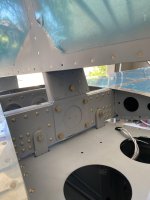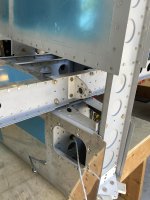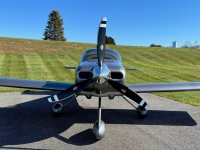MS19087
Well Known Member
I know this issue was raised under another thread, however nothing conclusive was presented so I am revisiting the topic.
This discussion compares two very similar RV-14As. The biggest difference being prop and paint weight.
RV14A #1 (mine) one has a 3 blade composite Hartzell (Empty weight 1283 - Nose = 375# Mains = 457#+ 451# )
RV14A #2 has a 2 blade metal Hartzell (empty weight 1333 - Nose = 377# Mains = 480# + 476#) This plane has more aft CG.
In cruise, my RV-14A (#1) flies with the elevator trim very much neutral with one or 2 passengers aboard - i am very happy with its trim characteristics.
In contrast, my neighbor (#2) flies with what i consider extreme elevator trim (down) in cruise w/ 2 pax.
A) Is this condition entirely CG driven?
B) Could an incorrectly installed nose fairing have any negative trim effects if not aligned level for cruise?
By the way - his RV is about 5knts faster than mine
Thoughts?
This discussion compares two very similar RV-14As. The biggest difference being prop and paint weight.
RV14A #1 (mine) one has a 3 blade composite Hartzell (Empty weight 1283 - Nose = 375# Mains = 457#+ 451# )
RV14A #2 has a 2 blade metal Hartzell (empty weight 1333 - Nose = 377# Mains = 480# + 476#) This plane has more aft CG.
In cruise, my RV-14A (#1) flies with the elevator trim very much neutral with one or 2 passengers aboard - i am very happy with its trim characteristics.
In contrast, my neighbor (#2) flies with what i consider extreme elevator trim (down) in cruise w/ 2 pax.
A) Is this condition entirely CG driven?
B) Could an incorrectly installed nose fairing have any negative trim effects if not aligned level for cruise?
By the way - his RV is about 5knts faster than mine
Thoughts?
Last edited:







